| # | NAME | FOLLOWERS | ER | COUNTRY | TOPIC OF INFLUENCE | POTENTIAL REACH | SAVE | INVITE TO CAMPAIGN |
|---|---|---|---|---|---|---|---|---|
| 1 |
Spinnin' Records
|
29.7M
|
-
|
|
8.9M | View Profile | ||
| 2 |
Martin Garrix
|
14.4M
|
-
|
|
4.3M | View Profile | ||
| 3 |
Trap City
|
14.1M
|
-
|
4.2M | View Profile | |||
| 4 |
NikkieTutorials
|
13.9M
|
2%
|
|
4.2M | View Profile | ||
| 5 |
أترو/Atro
|
12.8M
|
0.2%
|
|
3.8M | View Profile | ||
| 6 |
SuperbLyrics
|
6.4M
|
-
|
1.9M | View Profile | |||
| 7 |
Silo Entertainment
|
5.9M
|
-
|
1.8M | View Profile | |||
| 8 |
Saskia's Dansschool
|
5.7M
|
-
|
|
1.7M | View Profile | ||
| 9 |
Emma Heesters
|
5.7M
|
4.2%
|
|
1.7M | View Profile | ||
| 10 |
Armin van Buuren
|
5.4M
|
-
|
|
1.6M | View Profile | ||
| 11 |
Hardwell
|
5.1M
|
0.1%
|
|
1.5M | View Profile | ||
| 12 |
Armada Music TV
|
5M
|
-
|
|
1.5M | View Profile | ||
| 13 |
4.3M
|
-
|
|
1.3M | View Profile | |||
| 14 |
DTS TRADER
|
3.9M
|
0.3%
|
|
1.2M | View Profile | ||
| 15 |
Pick Up Limes
|
3.8M
|
0.5%
|
|
1.2M | View Profile | ||
| 16 |
ProjectJamesify
|
3.6M
|
-
|
1.1M | View Profile | |||
| 17 |
varlamov
|
3.6M
|
1.8%
|
|
1.1M | View Profile | ||
| 18 |
Cas van de Pol
|
3.3M
|
5.4%
|
|
990K | View Profile | ||
| 19 |
Chillhop Music
|
3.3M
|
-
|
|
984K | View Profile | ||
| 20 |
AutoTopNL
|
3.3M
|
0.1%
|
|
978K | View Profile | ||
| 21 |
Vibe Music
|
3.2M
|
-
|
|
945K | View Profile | ||
| 22 |
Dima en Auto's
|
3.1M
|
-
|
|
915K | View Profile | ||
| 23 |
Dark Corners
|
2.9M
|
-
|
879K | View Profile | |||
| 24 |
A Chick Called Albert
|
2.9M
|
0.9%
|
|
864K | View Profile | ||
| 25 |
عبادة خير الدين Obada Sykh
|
2.7M
|
0.6%
|
|
813K | View Profile | ||
| 26 |
EnzoKnol
|
2.7M
|
-
|
|
810K | View Profile | ||
| 27 |
Rap City
|
2.7M
|
-
|
|
807K | View Profile | ||
| 28 |
Igor Presnyakov
|
2.6M
|
-
|
|
777K | View Profile | ||
| 29 |
An Knook
|
2.6M
|
-
|
|
777K | View Profile | ||
| 30 |
StukTV
|
2.6M
|
0.5%
|
|
774K | View Profile | ||
| 31 |
Gezen Adam
|
2.6M
|
-
|
|
768K | View Profile | ||
| 32 |
MCPE Journalist
|
2.5M
|
-
|
|
750K | View Profile | ||
| 33 |
Eddie van der Meer
|
2.5M
|
-
|
|
750K | View Profile | ||
| 34 |
Without Music
|
2.5M
|
0.5%
|
|
741K | View Profile | ||
| 35 |
Gumbal
|
2.5M
|
-
|
|
735K | View Profile | ||
| 36 |
Disney NL
|
2.3M
|
-
|
|
690K | View Profile | ||
| 37 |
Jamesify
|
2M
|
-
|
|
603K | View Profile | ||
| 38 |
Epic Music NL
|
1.9M
|
-
|
|
582K | View Profile | ||
| 39 |
HardstyleUp2Datez [HU2Dz]
|
1.9M
|
-
|
|
573K | View Profile | ||
| 40 |
1.8M
|
0.2%
|
|
537K | View Profile | |||
| 41 |
TopNotch
|
1.8M
|
-
|
534K | View Profile | |||
| 42 |
Einzelgänger
|
1.7M
|
-
|
|
516K | View Profile | ||
| 43 |
7even Records
|
1.7M
|
-
|
|
510K | View Profile | ||
| 44 |
Vengaboys
|
1.6M
|
0.1%
|
|
471K | View Profile | ||
| 45 |
Revealed Music
|
1.6M
|
-
|
468K | View Profile | |||
| 46 |
Dance Fruits
|
1.6M
|
-
|
468K | View Profile | |||
| 47 |
noahsarklabel
|
1.5M
|
-
|
|
462K | View Profile | ||
| 48 |
Itchy Boots
|
1.5M
|
-
|
|
456K | View Profile | ||
| 49 |
MeisjeDjamila
|
1.5M
|
0.7%
|
|
447K | View Profile | ||
| 50 |
Davina Michelle
|
1.5M
|
-
|
447K | View Profile | |||
| 51 |
FundyLIVE
|
1.4M
|
-
|
|
420K | View Profile | ||
| 52 |
Milan Knol
|
1.4M
|
0.1%
|
|
414K | View Profile | ||
| 53 |
1.4M
|
-
|
|
408K | View Profile | |||
| 54 |
Jelle's Marble Runs
|
1.4M
|
0.3%
|
408K | View Profile | |||
| 55 |
Kalvijn
|
1.3M
|
1.1%
|
|
396K | View Profile | ||
| 56 |
Music by Blanks
|
1.3M
|
0.8%
|
|
393K | View Profile | ||
| 57 |
KOP Shorts
|
1.3M
|
-
|
|
393K | View Profile | ||
| 58 |
1.3M
|
-
|
|
387K | View Profile | |||
| 59 |
1.3M
|
0.1%
|
|
387K | View Profile | |||
| 60 |
Martoz
|
1.3M
|
-
|
|
381K | View Profile | ||
| 61 |
Disney Channel NL
|
1.3M
|
-
|
|
378K | View Profile | ||
| 62 |
5 Minuten Knutselen
|
1.3M
|
-
|
|
378K | View Profile | ||
| 63 |
SKILLER
|
1.3M
|
0.6%
|
|
375K | View Profile | ||
| 64 |
TopPop
|
1.2M
|
-
|
|
360K | View Profile | ||
| 65 |
Seru2112
|
1.2M
|
-
|
|
354K | View Profile | ||
| 66 |
GameMeneer
|
1.2M
|
-
|
|
354K | View Profile | ||
| 67 |
محمود انور - Mahmoud Anwar
|
1.2M
|
1%
|
|
348K | View Profile | ||
| 68 |
Future House Music
|
1.2M
|
-
|
|
345K | View Profile | ||
| 69 |
Surgical Goblin
|
1.1M
|
-
|
|
342K | View Profile | ||
| 70 |
Burak Yeter
|
1.1M
|
0.2%
|
|
330K | View Profile | ||
| 71 |
ПУРУМЧАТА
|
1.1M
|
-
|
|
330K | View Profile | ||
| 72 |
Cinema Of Gaming
|
1.1M
|
-
|
|
330K | View Profile | ||
| 73 |
Q-dance
|
1.1M
|
0.5%
|
|
327K | View Profile | ||
| 74 |
Alexander Studios
|
1.1M
|
5.4%
|
|
327K | View Profile | ||
| 75 |
1.1M
|
0.8%
|
|
324K | View Profile | |||
| 76 |
Basshall Movement
|
1.1M
|
-
|
|
321K | View Profile | ||
| 77 |
1.1M
|
0.5%
|
|
318K | View Profile | |||
| 78 |
Boomerang Benelux
|
1.1M
|
-
|
|
315K | View Profile | ||
| 79 |
Club Baboo
|
1.1M
|
-
|
|
315K | View Profile | ||
| 80 |
TOUZANI TV
|
1M
|
0.8%
|
|
312K | View Profile | ||
| 81 |
Within Temptation
|
1M
|
-
|
312K | View Profile | |||
| 82 |
Parul Saxena
|
1M
|
-
|
|
306K | View Profile | ||
| 83 |
Hussam & Rula Family
|
1M
|
1.9%
|
|
306K | View Profile | ||
| 84 |
Carol Domingos
|
1M
|
0.5%
|
|
306K | View Profile | ||
| 85 |
youngerdays (the old one)
|
997K
|
-
|
|
299.1K | View Profile | ||
| 86 |
Angerfist
|
984K
|
1.6%
|
|
295.2K | View Profile | ||
| 87 |
981K
|
1.1%
|
|
294.3K | View Profile | |||
| 88 |
Furtjuh
|
975K
|
3%
|
|
292.5K | View Profile | ||
| 89 |
Team DylanHaegens
|
942K
|
-
|
|
282.6K | View Profile | ||
| 90 |
Trap Club
|
938K
|
-
|
281.4K | View Profile | |||
| 91 |
AFC Ajax
|
927K
|
-
|
|
278.1K | View Profile | ||
| 92 |
SpideyPlanet
|
922K
|
-
|
276.6K | View Profile | |||
| 93 |
Jesus.net
|
917K
|
-
|
|
275.1K | View Profile | ||
| 94 |
Royalistiq
|
916K
|
0.2%
|
|
274.8K | View Profile | ||
| 95 |
Gab Smolders
|
901K
|
0.4%
|
|
270.3K | View Profile | ||
| 96 |
Ronald
|
893K
|
0.1%
|
|
267.9K | View Profile | ||
| 97 |
FunX Gemist
|
892K
|
-
|
|
267.6K | View Profile | ||
| 98 |
Avalon Music
|
887K
|
-
|
266.1K | View Profile | |||
| 99 |
Matthy
|
885K
|
3%
|
|
265.5K | View Profile | ||
| 100 |
883K
|
0.9%
|
|
264.9K | View Profile |
Sign Up Now to Access the Full Influencer List
Sign Up

FAQ: Top youtube Influencers in Netherlands
Who are the most influential Youtube personalities in Netherlands?
If you're eager to uncover the leading Youtube influencers in Netherlands, particularly those with substantial followings, our Influencer Discovery tool offers a valuable, no-cost solution.
As of the latest data, the standout influencer in Netherlands is @UCpDJl2EmP7Oh90Vylx0dZtA, boasting an impressive following of 29,700,000 subscribers within Netherlands.
Securing the second position among Youtube influencers in Netherlands is @UC5H_KXkPbEsGs0tFt8R35mA, commanding a global audience of 14,400,000 subscribers. Additionally, a noteworthy presence is maintained by @UC65afEgL62PGFWXY7n6CUbA, who currently enjoys a following of 14,100,000.
How to Identify Top Youtube Influencers in Netherlands?
The process of identifying prominent Youtube influencers can be approached in two ways. Firstly, you may opt for manual searches within the Youtube application or website, although this method can be time-consuming. Alternatively, you can choose a more efficient route by utilizing our Influencer Discovery tool. This robust tool not only simplifies the process but also allows you to navigate through a vast content creator database, evaluate engagement rates, explore target audience demographics, and more. It assists you in selecting the most suitable influencer for your specific requirements and even offers convenient filtering options based on location, audience size, age, and gender.

 Threads
Threads



